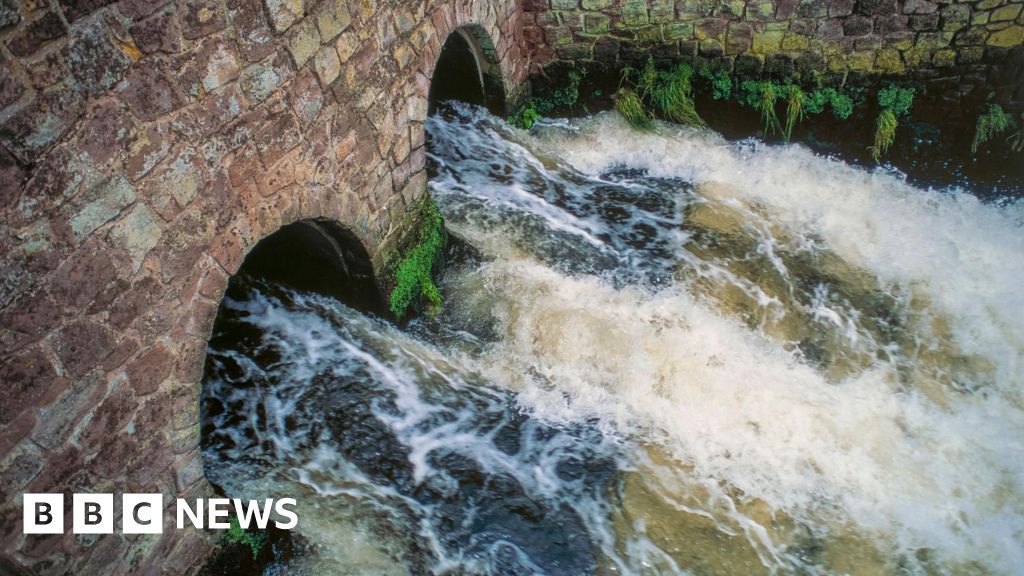ARTICLE AD BOX
 Image source, H2M
Image source, H2M
The Green Goat is getting a green refit
By Chris Baraniuk
Technology of Business reporter
An old diesel freight train in British Columbia, Canada is about to get a new lease of life.
Local firm Hydrogen in Motion (H2M) is currently converting the Green Goat locomotive to run on a mix of hydrogen and battery power.
The so-called switcher locomotive performs tasks such as transporting small loads of lumber or animal feed at rail yards.
If all goes to plan, H2M will have the engine running by the end of this year, or early next.
"With the successful demonstration of this we would be looking at much larger trains as well," says H2M president and chief executive Grace Quan. "We'd be looking at converting entire fleets."
Hydrogen, which emits water but no carbon dioxide when burned, is often touted as a fuel of the future.
There are already a few hydrogen-powered trains out there, such as the ones currently being rolled out in the German state of Lower Saxony. The technology made its debut there in 2018.
In the UK, a hydrogen locomotive, HydroFlex2, is undergoing testing in Long Marston, Warwickshire.
But current methods of storing hydrogen in tanks, as a highly pressurised gas or extremely cold (cryogenic) liquid, are expensive and potentially unsafe. Scientists have long aimed to find ways of storing hydrogen in more inert solid forms.
Image source, H2M
Image caption,Grace Quan (front) hopes H2M can convert whole fleets of trains to hydrogen and battery power
In H2M's case, the company has developed a nanomaterial within which hydrogen is stored at relatively low pressure compared to other techniques.
By simply opening a valve and lowering the pressure, the hydrogen comes off, just like when the CO2 in a carbonated drink gets released when you open the bottle, says Ms Quan.
She adds that hydrogen could be especially useful for powering heavy vehicles that go on long journeys, such as trains and lorries, though the company has also developed a hydrogen-powered three-wheeler tuk tuk as a small-scale demonstration.
"Depending on the size of the fuel cell, we could give up to a week's worth of power," says Ms Quan of the tuk tuk.
But she adds that sourcing investment funds to develop her firm's technology has not been easy. And many other solid state hydrogen storage solutions are at an early phase of development.
Though some of them are exciting, the huge challenge they face is to prove that they are commercially viable and worth choosing over, say, batteries for certain applications.
Duncan Gregory at the University of Glasgow says that those working on hydrogen storage technology at the moment are aiming to achieve a density of 5 wt% (weight per cent) or greater within the storage medium. "It's really difficult to get to that," he explains.
Image source, Deakin Univeristy
Image caption,Srikanth Mateti (left) and Ian Chen are working on a technique to make hydrogen powder
There's plenty of effort, though. Take the method that Ian Chen at Deakin University in Australia and colleagues are currently beavering away on.
It involves a technique called ball milling, a sort of grinding process using tiny balls inside a canister. This grinding activity raises pressure levels, encouraging gases to become absorbed by a powder inside the canister.
Prof Chen and his colleagues have found that they can use this to store gases including hydrogen in boron nitride powder.
"We like it because it's stable, it's not toxic, it's lightweight," says Prof Chen, who adds that 5 wt% should be possible with this method.
In July, the team described how this process could be used to store hydrocarbons in an academic paper. The detail of experiments in which they managed to store hydrogen and other gases such as CO2 and ammonia are yet to be made public.
Prof Chen is enthused by the possibility of storing hydrogen in this form, which simply requires the application of heat to release the gas again. But he admits that a long road lies between this research and commercial success.
The team would need to design large-scale equipment and show that the method would be truly cost-effective at scale. "We don't claim that we have solved all the major problems," says Prof Chen.
The cost challenges were underlined in October when the German state of Baden-Württemberg ruled out replacing diesel locomotives with hydrogen-powered trains.
A study commissioned by the state concluded that the installation of overhead electricity lines or battery hybrid trains provided much better value for money over a 30-year period.
Prof Gregory, who is currently working with a separate, undisclosed firm on hydrogen technology, adds that one of the potential issues with the ball milling process is how long it takes. The small-scale experiments reported by Prof Chen and his colleagues so far took 20 hours of milling.
Besides transportation, hydrogen stored in a solid state could have other uses. A trial currently under way in Scotland will test hydrogen generation and storage on one of the Orkney Islands
A machine-learning system will monitor weather patterns and decide when to use electricity from nearby wind turbines to power the electrolysis process, which is how hydrogen is extracted from water.
"It's a good test bed," says Enass Abo-Hamed, chief executive and co-founder of H2GO Power. "You could have a week full of wind and then a week with nothing."
The system will also determine when the hydrogen would best be released or stored, in this case within a powder-like substance. This stored energy would provide a potential resource during wind droughts.
Image source, Emec
Image caption,This test site in Orkney uses electricity from wind turbines to make hydrogen powder
A lack of wind has, unfortunately, helped to push up UK energy prices this year.
Although it's not yet certain that the system on Orkney will actually be connected to the local grid during the trial, Dr Abo-Hamed says it is a possibility and, if so, the hydrogen could be used to power up to 70 homes. In the future it could also, in theory, be converted back into a gas state and used for domestic heating.
Hydrogen has potential as a boiler fuel that would be cleaner than natural gas, argues Prof Gregory, though there are significant challenges in implementing this, too.
Recent studies have cast doubt on hydrogen's potential as a fuel, both in terms of heating and transportation.
Prof Gregory argues that, if someone can crack the hydrogen storage problem, then that could fundamentally change how we power the world's vehicles - from freight trains to cars.
"I can see in 20 years' time or whatever, when somebody eventually comes up with a material that will do this job, I reckon batteries could well be superseded by hydrogen," he says.

 2 years ago
39
2 years ago
39








 English (US) ·
English (US) ·